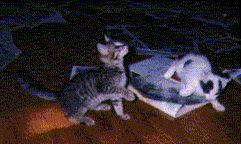Image map
Elements
An image with hot spots lets the user click on the hot spots,
to link to another page.
There are three important elements, which must be used to build
an image with hot spots:
imgmaparea
The img tag must contain a usemap attribute,
which must refer to the name of the map element.
The map must have a name, rather than an id.
Within the map container element, there must be area elements.
Shape and dimensions
Within an image, the dimensions are measured from the top left corner.
Dimensions are measured in pixels.
The x coordinate is across from left to right.
The y coordinate is DOWN from top to bottom.
You can specify any point in the image by its x and y coordinates.
Be careful that your hot spots do not overlap, and do not extend outside the image. This can produce unexpected results.
We will use dimensions to specify the hot spot areas.
There are three hot spot area shapes, which can be used for hot spots.
The shape attribute can have one of these three values:
rect- for a rectanglepoly- for a polygoncircle- for a circle
For a rectangle, you specify the x and y coordinates of the top left corner of the hot spot,
followed by the x and y coordinates of the lower right corner of the hot spot.
For example, to get a rectangular hot spot with
the upper left corner 100 pixels from the left edge and 10 pixels down from the top, and
the lower right corner 140 pixels from the left edge and 190 pixels down from the top, code:
<area shape="rect" coords="100, 10, 140, 190"
For a polygon, you specify the x and y coordinates of each vertex of the hot spot,
in order around the polygon.
For example, to get an isosceles triangle hot spot with vertices
100 pixels from the left edge and 10 pixels down from the top, and
60 pixels from the left edge and 190 pixels down from the top, and
140 pixels from the left edge and 190 pixels down from the top, code:
<area shape="poly" coords="100, 10, 60, 190, 140, 190"
For a circle, you specify the x and y coordinates of the center of the hot spot,
and then the radius.
For example, to get a circle hot spot with center
100 pixels from the left edge and 90 pixels down from the top, and
a radius of 60 pixels , code:
<area shape="circle" coords="100, 90, 60"
Attributes and elements
Let's look at all the elements and attributes needed to have an image map.
You need an img element, with its usual attributes and the map attribute:
srcheightwidthaltmap- with # and the name of the map element
You need a map container element.
The map element must have
a name attribute.
Within the map container you need one or more
area elements for the hot spots.
For each area element you need the attributes:
shape- rect, poly, or circlecoords- coordinates, as appropriate for the shapehref- the target page the browser will go toalt- used for a tool tip
Example

picture of Cleo picture of Osage
This image has hot spots, that are mapped as links. There are also text links under the image.
The code for the image map shown above is:
<img src="images/kit1.gif" height="288" width="481"
alt="Cleo and Osage"
usemap="#kit1"
/>
<map name="kit1">
<area shape="circle"
coords="190,164,100"
href="images/kit2.gif"
alt="picture of Cleo"
title="picture of Cleo"
/>
<area shape="rect"
coords="300,94,480,230"
href="images/kit5.gif"
alt="picture of Osage"
title="picture of Osage"
/>
</map>
How do you find the coordinates, so the hot spots are where you want them?
There are some techniques, using image processing programs.
I find they are more trouble than they are worth.
I just guess, and modify it until it is right.
When you move the mouse into a hot spot, it turns into a hand.
Move the mouse around and watch when it turns into a hand.
Check your coordinates to make sure your hot spots do not overlap, or extend outside the image.